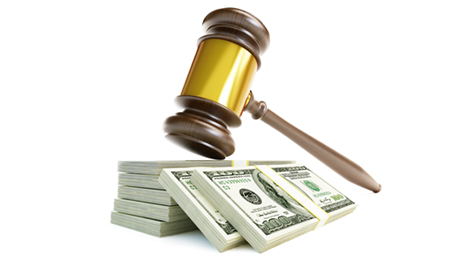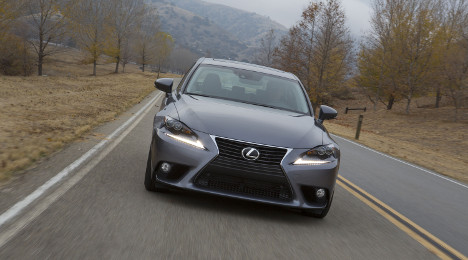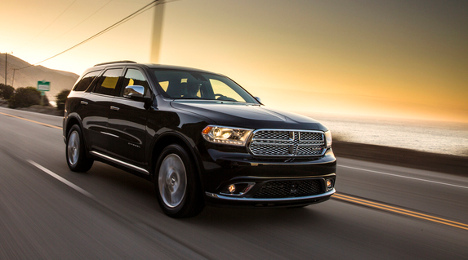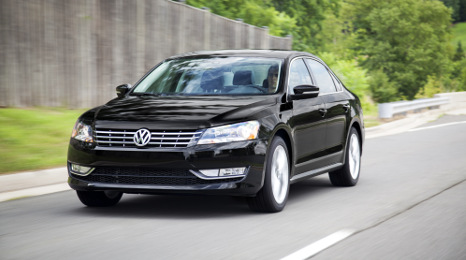Wholesale prices didn’t move much in September, and trends seen throughout the course of the year continued to prove true this past month.
The monthly analysis of wholesale prices by ADESA Analytical Services indicates that used rates were “relatively flat” in September, as car prices continued to fall and truck prices were on the way up in light of low gas prices.
That’s according to the latest edition of Kontos Kommentary from Tom Kontos, executive vice president and chief client officer at ADESA Analytical Services.
“Drilling down by seller type reveals continued softness in prices on both a sequential and year-on-year basis, especially for institutional sellers,” Kontos said. “Still, healthy retail demand continues to minimize the negative impact to price of growing volume.”
According to the report, auction prices in September averaged $9,619, which translated to a 0.5-percent increase from August, and a 0.7-percent spike year-over-year.
“Prices for trucks were up sequentially and annually, while the opposite was true for cars,” Kontos said.
Car prices, on average, fell by 0.2 percent in September, but were down 4 percent year-over-year. The compact car segment saw a significant decline, with rates falling by 1.4 percent from August for an average of $6,421. This segment was joined by the sporty cars, whose prices also fell by 1.4 percent to an average of $11,583. The biggest year-over-year drop was seen among the midsize cars; their average price of $7,263 represents a 4.9-percent decline from September 2014.
Truck prices, on the other hand, were up 0.8 percent from August and 9.2 percent year-over-year. They had an average price of $11,361 in September, the strongest price movement was seen in the midsize SUV segment. Prices for these units rose 4 percent from August, coming in at an average of $8,138.
The minivan segment also posted a strong performance, with prices rising by 3.6 percent from August to an average of $6,860. The full-size SUVs are also going strong; prices were up 2.1 percent in September for an average of $11,400.
Kontos also provided a breakdown of wholesale prices by seller, reporting auction prices for used vehicles remarketed by manufacturers were down 1.2 percent from August and 6.2 percent year-over-year. Prices for fleet/lease consignors also took a hit, with rates dropping by 0.4 percent monthly and down 0.3 percent from September 2014.
“Off-rental program and risk units both showed year-over-year declines in average prices despite manageable volumes and reasonable mileages,” Kontos explained.
Lastly, dealer consignors saw prices dip by 0.9 percent from August, but rates were up 3.2 percent year-over-year.
Kelley Blue Book customers can now access mass vehicle valuations in real time through a self-service portal.
The company said in a news release today that customers can get KBB Values and configuration data “on their own time” simply by putting the batch VIN info through a Web-based interface now available in the company's business-to-business product suite.
“The latest addition to Kelley Blue Book’s suite of industry solutions gives customers easy access to useful VIN-specific data and timely, relevant new and used-vehicle valuations on their own time,” said Dan Ingle, vice president of valuations and industry solutions for Kelley Blue Book. “Leveraging Kelley Blue Book’s nearly 90 years of automotive expertise, providing trusted values, unparalleled data and integration tools for both new and used vehicles, we continue our mission to be a vital resource for our customers.”
KBB gets the VIN-related info through factory data. If the decoding process picks up more than one time of trim, KBB will provide all associated VIN trims, the company said.
For more information, visit https://b2b.kbb.com/BatchVIN if you're with a direct mail marketing company. If you're with a financial institution, visit https://b2b.kbb.com/portfolio.
Investment observers asked Cox Automotive economist Tom Webb why wholesale prices aren’t softening, given how volume is on an upward track and likely to gain steam next year when even more off-lease units fill the lanes.
Webb countered by sharing not only what’s going within showrooms, but also moves by used-car managers at both physical and online auctions to explain why steady and perhaps slowly rising wholesale prices are likely to be the norm for the foreseeable future.
The inquiries came since the Manheim Used Vehicle Value Index moved up 2.8 percent in September, marking the fourth month in a row in of a year-over-year uptick. During his opening comments of his latest quarterly conference call, Webb said that if prices bounced up and down significantly, only one small faction of the industry might benefit. And Webb said that group only would be wholesalers if “they do it right.”
Webb then looked to distinguish dealers on Main Street from stockbrokers on Wall Street.
“Most dealers are not speculating on what used prices are going to do,” Webb said. “They’re interested in what they are and they have to live with that.
“If there is a significant erosion in pricing in the wholesale market shortly after they make a purchase it’s not a good thing,” he continued. “But it’s not that much better if they suddenly accelerate and they could say they should have bought more.”
No matter how many vehicles dealers want to include in their inventory, they’re likely to find lots of choices, especially since Webb is thinking off-lease volume might surge beyond 3 million units next year.
“Again, those off-lease numbers are big,” Webb said. “Those 3 million vehicles have to be sold. They will be sold and then they have to be retailed and retailed at a profit.
“We have a certain number of vehicles that have to change hands in the wholesale market regardless of whether there’s demand there or not,” he continued. “The pricing has to adjust. I would say the key factor is helping used-vehicle prices overall is the ability of the dealer to subsequently retail that unit in short order at a profit. All of that has remained favorable.
“That’s why I would continue to suggest that you wouldn’t have any significant collapse in pricing. Sure, there might be some downward pressure on pricing, but no collapse as long as the retail environment remains favorable,” Webb continued.
And Webb said the environment remains favorable, especially for certified pre-owned sales where much of that off-lease volume is likely to land. CPO sales continue to be strong, aided in part by what Webb described as a consumer financing market “that is as good as it’s ever been.”
The other component to wholesale price stability that Webb mentioned is how dealership are leveraging inventory management technology. Of course, Cox Automotive has its offerings from Manheim, vAuto and segments of the company. DealerSocket enhanced its inventory management solution when it acquired Inventory+ from Dealertrack Technologies this year.
And CarMax recently described how inventory management is placing the company into a better position to thrive with more off-lease units available.
“The inventory management tools have been out there for some time, but initially they were totally adopted by used-car managers,” Webb said. “Almost all dealers are taking a much more analytical approach in terms what they acquire, how they acquire and the prices they’re willing to pay and also the price they’re willing to put on it at retail, too.
“They’ve become much better at all of that. So to the extent that you can go out there with more confidence that you’re going to earn a given gross in a given amount of time, the amount of what I would call risk premium that you have to put into your auction bid gets reduced,” Webb went on to say.
Leaves might be starting to fall as autumn deepens, but Manheim spotted that wholesale used-vehicle prices (on a mix-, mileage- and seasonally adjusted basis) climbed for the fourth consecutive month in September.
The upward movement brought the Manheim Used Vehicle Value Index to a reading of 124.8, representing an increase of 2.8 percent from a year ago.
Cox Automotive chief economist Tom Webb explained that September’s pricing softened before the seasonal adjustment. Webb also acknowledged that measuring that seasonal adjustment is “tricky” this time of year.
But the pattern of wholesale pricing during the last four months — as well as the last four years — has been one of strength and stability, according to Webb.
“Wholesale pricing trends have defied the expectations that analysts held at the beginning of the year, but used-vehicle values are not defying fundamentals,” Webb said.
“Yes, wholesale volumes are up significantly, but it’s from a low base. Yes, new-vehicle incentives are up, but not to dangerous levels. And, yes, used-retail margins are down, but net profits are rising,” he continued.
Looking deeper into the numbers, Manheim noticed the weakest pricing tiers remained in the $9,000 to $11,000 range, while luxury cars and SUVs and CUVs showed modest gains.
Third-quarter wholesale pricing trends for vehicle segments included:
• Compact car prices were down 5.4 percent in September compared to the same period last year, and once again remain the only major market segment with lower pricing versus a year ago.
• Midsize cars remain one of the weaker segments, but saw an increase of 2.6 percent compared with the same time period last year.
• Luxury car values had a small gain of 0.5 percent over the same period last year, and remain weak considering this was also the case for last year’s pricing. The small gain can also be attributed to more efficient re-marketing of cars in this class.
• Pickups and vans once again won the top spots, with pickup pricing up a significant 11.8 percent and vans up a more modest 5.1 percent on a year-over-year basis.
• SUVs and CUVs rose 3.1 percent compared with last September, helped by an increase in vehicle miles of travel and lower gas prices.
“Used-vehicle operations — including CPO sales — should be set up well for October given that new-vehicle inventory levels are down thanks to a higher sales pace last month,” Webb said.
Recovering off-rental pricing
Manheim determined a straight average of auction prices for rental risk units bumped up in both August and September. Webb indicated this development brought the average price “very close” to where it has been for the past three years. He added the trend is confirmation that the “weak” pricing in May, June and July was mostly a reflection of the older, poorer-condition vehicles being sold.
After being up significantly in the first eight months of the year, Manheim also noticed auction volumes for rental risk units eased in September.
The average mileage on units sold slipped back below 45,000 miles, but was still up 8 percent from a year ago
“A straight average of all auction sales naturally showed a seasonal decline in pricing from August to September, but values were well up from year-ago levels for both commercial and dealer-consigned units,” Webb said.
“The average mileage on dealer-consigned units continued to track below its year-ago level,” he continued.
New-car commentary
Turning his attention to the new-model market, Webb called last month’s performance by franchised dealerships, “exceptionally good.”
Webb conceded that it’s becoming a regular monthly occurrence in which the new-vehicle sales pace exceeded expectations. In fact, at 18.2 million, Webb pointed out the SAAR was the highest in more than decade.
Webb mentioned the July 2005 pace of 20.6 million was the result of employee-discount pricing programs, “which resulted in a subsequent payback.”
The Cox Automotive expert closed by mentioning a potential pitfall that sometimes surfaces when new metal is rolling over the curb at this pace.
“When new-vehicle sales exceed expectations, there is always concern that dealers might have over-allowed on the higher number of trade-ins they received,” Webb said. “So far this year, they have not.
“If they correctly valued trade-ins in September, their used-vehicle operations should be set up well for October given that new-vehicle inventory levels are down due to the higher sales pace last month,” he went on to say.
Editor’s note: More commentary and analysis from Webb’s quarterly conference call will be published soon in Auto Remarketing Today, SubPrime News Update and CPO Weekly.
Both cars and trucks are seeing softening prices in the lanes as the industry enters the fall market in full swing.
And though Black Book editors noted that depreciation patterns for cars and trucks have remained “constant” over the past several months — with most car segments experiencing stronger depreciation than trucks — there are a few outliers.
According to the latest Black Book Market Insights report, luxury, near-luxury and prestige luxury cars continue to see lighter depreciation rates than the majority of other car segments.
The report indicates that while car prices slid down by an average of 0.60 percent or $67 last week — the largest depreciation rate seen since the third week of June — near-luxury cars saw the lightest declines, with a slight drop of 0.04 percent or $6. Luxury and prestige luxury cars also saw better-than-average depreciation rates, with declines of just 0.14 percent ($28) and 0.22 percent ($83), respectively.
Compare this to the largest depreciation rate seen among cars last week: the compact car segment, which saw prices drop by 1.27 percent or $99.
On the truck side, vehicles continue to hold their price better in the lanes. On average, truck prices only dropped by 0.35 percent or $56 last week.
“Most car segments continue at a more accelerated depreciation rate than truck products. This will most likely continue throughout the rest of the year,” said Anil Goyal, vice president of automotive valuation and analytics.
Interestingly, though compact pickups performed well over the summer, they saw one of the biggest depreciation rates among trucks last week, dropping price by 0.87 percent or $128. The only segment to see higher dollar depreciation among the trucks was the full-size CUVs, whose prices fell by 0.84 percent or $135.
The midsize pickups were the only segment to see prices rise last week, with a slight increase of 0.07 percent or $8. The full-size pickups also performed well, with prices dropping by just 0.04 percent or $7.
In this report edition, Black Book editors also supplied an update on the specialty markets.
Taking a look at collectible cars, in particular, Black Book editors noted the market continues to be strong.
“Auctions featuring all types of vehicles, from pre-war American Classics to European Exotics, were well attended this past month in places as diverse as the Midwest and Great Britain,” they said.
Recent collectible car auction success is illustrated through Auctions America’s annual Labor Day sale in Auburn, Ind., which Black Book reported was attended by over 85,000 automotive enthusiasts. Total sales came to $20 million, with 870 cars changing hands.
Black Book cited the recent RM Sotheby’s London sale, as well, with total sales breaking through the $25 million mark, with 55 of the 70 vehicles offered sold.
Eric Lawrence, director of specialty markets at Black Book elaborated, said, “The collectible market continues to be strong. Auctions featuring all types of vehicles, from pre-war American Classics to European Exotics, were well attended this past month in places as diverse as the Midwest and Great Britain.
“As true vintage exotics have become too expensive for most collectors, many are turning their attention to less exclusive European makes, such as Porsche, Jaguar, and Alfa-Romeo. Many of their more desirable models, such as early 911 turbos, E-Types, and Giulias, have doubled or even tripled in value,” he continued.
An electric SUV. Those are two words the auto industry might not have expected to ever see side by side a decade ago.
Of course, automakers have begun exploring the possibility of this segment in recent years, an example being the Toyota RAV4 EV.
But today, the industry buzz is all about the new Tesla Model X, which launched on Wednesday. The pure electric SUV will serve to push the company forward beyond the car market and its popular Model S sedan.
Industry analysts were already discussing the potential of the Model X hours before the launch. For example, Edmunds.com director of industry analysis Jessica Caldwell took a look at some of the opportunities for Tesla that arose in looking at trade-in data.
Interestingly, Caldwell pointed out many Tesla owners second vehicle choice has leaned toward SUVs.
"According to Edmunds.com's transaction data, nearly 30 percent of all Tesla trade-ins have gone toward purchasing an SUV. By adding an SUV to their lineup, Tesla can capture those Model S owners who either want something larger or would like an SUV to add to their personal fleet,” she explained in an analysis Wednesday.
And interest on the new site for the long-awaited Model X is soaring.
"As expected, Model X traffic on Edmunds.com has been trending upward. Last month, its traffic surpassed most of its luxury SUV competitors including the popular Range Rover Sport and Porsche Cayenne,” Caldwell said.
And as oil prices decline — though not relevant for the electric Tesla X — shoppers have been turning to larger models. In fact, beyond low gar prices,
Edmunds shared sentiment among today’s buyers leans toward, “bigger is better.” This trend bodes well for the timing of the launch of the Model X.
"Today's Americans have an insatiable craving for larger vehicles,” Caldwell said. “Edmunds' analysis of sales data finds that trucks and SUVs have outsold cars in the U.S. in each of the last 24 months. It would be an understatement to say that Tesla is launching Model X at an opportune time."
One must also take a look at how the Tesla Model X is a “unique option” for luxury SUV shoppers. Caldwell shared that many shoppers looking at luxury SUVs on the site are already showing interest in the Model X.
“Model X will stand out for shoppers because it will be the only fully electric luxury SUV in the marketplace at launch, which brings something unique to this competitive segment,” she added.
Diversification of offerings and the lineup itself has been a trend for Tesla over the past year.
For example, the automaker launched its CPO program back in April, which will allow the company to take advantage of its trade-ins.
And the company also recently opened a “hub” in the Buena Park Auto Center in Orange County, Calif., where buyers in the market for a CPO model can test drive and purchase a pre-owned Tesla Model S right off the lot.
The Tesla retail centers, coined by the company as Stores & Galleries, in the past just gave buyers the option to test-drive a new Tesla car at the store and place an order, while drivers looking to purchase a certified pre-owned model had to request a test drive and buy the vehicle through the company’s CPO website.
Now, the company is entering the SUV market with another move to diversify its offerings.
"The name of the game for Tesla right now is 'diversification.' The company made a big splash with Model S, and the next step is to win over a larger audience in other segments,” Caldwell said.
Caldwell also said the Model X might open the Tesla brand up to another demographic.
“Model X is a smart step toward capturing the attention of high-end SUV shoppers. And while the Model S skews heavily male, the Model X is an opportunity for Tesla to expand its customer base by appealing to more female consumers who make up a strong share of crossover SUV buyers,” she said.
The Model X is bound to appeal to those in the market for high-end luxury SUVs, but it will be interesting to see what occurs when the automaker launches the Model 3, the $35,000 Tesla model that is expected to hit the market in March 2016.
"There's little doubt in the marketplace that Model X will be successful with its audience of wealthy early adopters. But today's launch is a quick stop on a longer and more important journey,” said Caldwell. “The real test for Tesla comes down the road when it launches the Model 3, when we'll learn for sure if mainstream car buyers are ready to make the switch from gas to electric."
Depreciation was ramping up as we approached October, and a few car segments bared the brunt of recent price declines.
And according to the latest Black Book Market Insights report, dealer sentiment across the country continues to focus on slowing buyer demand in the auction lanes.
This past week the full-size, compact and entry midsize car segments led price drops at auction, with rates dropping by 1.08 percent, 0.98 percent and 0.81 percent, respectively.
The full-size car price drop equated to a decline of $98 this past week. Black Book analysts pointed out the full-size car segment has declined more than the overall car average for four consecutive weeks and has accumulated depreciation of 3.26 percent during that same time frame.
Last week, overall auction prices for cars dropped by an average of 0.57 percent or $64. Black Book editors reported this is the highest weekly depreciation rate seen since the third week of July.
“Recent wholesale activity is the leading indication that seasonal trends are setting in as buyers get cautious,” said Anil Goyal, vice president of automotive valuation and analytics.
And buyers in the lanes echoed this sentiment. The Black Book editorial team overheard an auction attendee from Nevada noting, “Buyers report they are being cautious but that retail is still pretty good.”
On the truck side of the market, depreciation was not quite as dramatic, following trends seen over most of 2015. Last week, truck values dropped by an average of 0.21 percent or $33, and all segments experienced better than 0.4-percent depreciation. Black Book editors also pointed out that the 52-week average for truck depreciation also sits at 0.21 percent, which illustrates market stability.
Full-size SUVs are standing out at auction, as they have had a stronger weekly retention rate than the overall truck average for nine straight weeks. Last week, the segment saw a slight depreciation of 0.13 percent or $25.
The best performing segment among the trucks last week were the midsize pickup trucks, whose rates held steady with no movement.
On the other hand, the midsize SUVs saw the largest depreciation rate for trucks, with rates dropping by 0.39 percent or $67.
Buyers in the lanes are noticing truck strength, as well, as a buyer from Washington was overheard saying last week, “The truck market here has a strong supply of late-model units and sellers have adjusted prices to help complete sales.”
Q2 Residual update
The latest RVI Risk Outlook report took a look at residual movement as August came to a close, as well as predicting increased depreciation beyond what is seasonally expected.
In August, prices on 2- to 5-year-old vehicles fell, after being adjusted for seasonality. Nominal prices fell by 0.6 percent from July, but were up 1 percent year-over-year. After adjusting for MSRP, rates in August showed a decline of 0.7 percent from July and were down 1.4 percent year-over-year.
That said, the report stated that the “ decline in residual value is not observed in every segment, as larger vehicles and many luxury segments have seen increases in our index on a year-over-year basis.”
For example, the luxury coupe segment saw prices rise the most in August with a 2-percent jump from July and a 2.1-percent increase year-over-year. On the large vehicle side, the full-size SUVs were once again the strongest performer, with prices rising by 1.5 percent from July and 5.4 percent year-over-year.
RVI also took a look at leasing movement and how it directly pertains to the residual outlook for used vehicles.
In Q2 of 2015, the lease penetration rate equated for 20.2 percent of total sales.
“We expect the growth in leasing to continue over the next several years which will contribute to a growing supply of off-lease vehicles,” RVI analysts reported.
Of course, this will put increased downward pressure on used values in the coming years, especially relevant as the leasing rate is not supposed to slow down anytime soon.
RVI is forecasting an increase in leasing through 2017 and that the supply of used vehicles is expected to continue to grow in the market through 2020.
The report also brought up increased competition in the new-vehicle market, which will serve to ramp up incentive activity and add to the pressure on used residuals.
Consequently, RVI is forecasting used prices will fall by 6.6 percent from current levels by 2018.
One segment, in particular, might be hit particularly hard by this combination of factors pushing used prices down: the midsize sedans.
Prices for this segment fell by 5.9 percent in August; the market average was a decrease of 1.4 percent.
“The drop in gas prices over the past year along with the improved economic climate has decreased demand in the segment,” RVI analysts explained.
And the used supply for this segment is expected to continue to ramp up through 2017, before “leveling off,” which is expected to contribute to a price drop of 7 percent by 2018, also above the forecasted industry average.
After holding strong values through most of the year, trucks posted the largest price decline at auction since 2014 this past week, showing signs of approaching fall.
The latest Black Book Market Insights report shared truck prices dropped 0.46 percent or $73 last week, “indicating that the fall price declines might finally be in full gear.”
Cars, on the other hand, which have seen much stronger depreciation in 2015, saw a similar rate of decline, losing 0.51 percent or $58 of their value.
Anil Goyal, Black Book vice president of automotive valuation and analytics, said, “It’s beginning to feel like fall and along with the decreasing temperatures outside, we are seeing decreasing values across all our segments.”
This assertion was echoed by customers in the lanes. Black Book editors overheard an auction attendee from Arizona, say, “Prices (are) slowly inching downward in this area.”
On the truck side, compact SUVs, full-size cargo vans and full-size passenger vans saw the greatest depreciation, all posting price declines greater than 1 percent last week.
Full-size pickups also saw a larger-than-average decline of 0.52 percent or $98.
On the other hand, the midsize SUV (-0.33 percent or -$19), minvan cargo (-0.19 percent or -$10) and minivan passenger (-0.04 or -$5) segments experienced much smaller decreases in value.
On the car side of the biz, the upper mid-size car (-0.89 percent or -$96), entry level car (-0.88 percent or -$56) and full-size car (-0.75 percent or $68) segments saw the largest declines last week.
Interestingly, the compact cars, which saw some of the biggest depreciation in the lanes after tax season, posted the smallest price drop out of all car segments. This segment saw a decline of just 0.26 percent or $21.
Fitch Ratings doesn’t expect Volkswagen to pay the highest possible fine — $18 billion — stemming from the U.S. Environmental Protection Agency and the California Air Resources Board revealing findings that allege five of the OEM’s diesel-powered vehicles include “defeat device” software that circumvents emissions standards for certain air pollutants.
However, the automaker is already experiencing a major impact in a variety of ways, and Black Book indicated that it’s keeping an eye on three elements in order to evaluate how this issue will impact vehicle values. Anil Goyal, vice president of automotive valuation and analytics for Black Book and one of the experts coming to Used Car Week gave Auto Remarketing the rundown on Monday, highlighting:
1. How will EPA force consumers to implement recall changes? Will the regulator stop such vehicles from passing emissions and thus not being able to update vehicle registration? If so, which vehicles will be impacted by EPA: new only, used trading hands, or existing vehicles as well?
2. How easy is it for the dealers to update the software? And, how does VW incentivize its customers to get an update? How do they manage “Clean Diesel” brand image?
3. What impact does the fix have? Will it worsen the car's fuel economy or will it introduce performance issues? Given the low gas and diesel prices, fuel economy impact to vehicle values will be minimal.
“Recalls are common in the auto industry,” Goyal said. “Looking at precious recalls, we don’t see a long lasting negative impact to values in general. What suffers the most are the brand and the sales of new vehicles.
“In the end, if the manufacturer can effectively manage damage control of the brand and the operations to implement recalled changes, the vehicle values are typically not impacted in the long term,” he continued.
“This recall situation could be different,” Goyal added. “Most recalls are safety related and could actually improve goodwill with the customer when the car is fixed. It is not clear what was the intent of this software meant to skirt emissions testing.”
And reportedly the U.S. Department of Justice is asking questions, too. Bloomberg reported on Monday afternoon, citing two officials familiar with the situation, that the Justice Department is conducting a criminal investigation of VW.
All of this uncertainty significantly impacted VW’s value with investors. Reuters reported that VW’s stock tumbled more than 20 percent on Monday, a day after the OEM’s chief executive officer said he was “deeply sorry” about the entire incident.
“The board of management at Volkswagen AG takes these findings very seriously,” VW’s Martin Winterkorn said. “I personally am deeply sorry that we have broken the trust of our customers and the public. We will cooperate fully with the responsible agencies, with transparency and urgency, to clearly, openly, and completely establish all of the facts of this case. Volkswagen has ordered an external investigation of this matter.
“We do not and will not tolerate violations of any kind of our internal rules or of the law,” Winterkorn continued.
“The trust of our customers and the public is and continues to be our most important asset,” he went on to say. “We at Volkswagen will do everything that must be done in order to re-establish the trust that so many people have placed in us, and we will do everything necessary in order to reverse the damage this has caused. This matter has first priority for me, personally, and for our entire board of management.”
Meanwhile, Fitch analysts based in London and Madrid assessed the potential penalty federal regulators could assess stemming from the vehicles associated in the investigation. “We believe the fine is unlikely to amount to the theoretical maximum amount,” they said about the calculation of a $37,500 penalty for each unit involved. Covering roughly 482,000 diesel passenger car sold by VW and Audi in the U.S. since 2008, the affected diesel models include the following:
• Jetta (Model Years 2009 – 2015)
• Beetle (Model Years 2009 – 2015)
• Audi A3 (Model Years 2009 – 2015)
• Golf (Model Years 2009 – 2015)
• Passat (Model Years 2014-2015)
“Owners of affected Volkswagen and Audi vehicles understandably have a lot of questions about what's next,” Edmunds.com director of industry analysis Jessica Caldwell said. “The good news for these owners is that there is no imminent safety threat in driving these vehicles.
“Of course, owners who bought these diesel vehicles in part because of any environmental benefits may have moral objections to driving them, and they may feel they have no other option but to keep their cars parked for the time being,” Caldwell said. “And then there are owners who just feel flat-out deceived and will want their money back.
“But until Volkswagen reveals a plan for how they will either buy back the cars or fix them so that they truly meet emissions standards, all affected owners will have to wait and see,” Caldwell went on to say. “It is in Volkswagen's best interest to publicly address steps to fix this mess as soon as possible before it loses its customer base for good."
Even if the OEM doesn’t have to wire $18 billion to federal regulators, Fitch, like Caldwell from Edmunds.com, emphasized the notice of violation of the Clean Air Act could “seriously undermine” the automaker’s brand image, particularly in the U.S., where Volkswagen is “already struggling to increase its market share.”
Fitch added, “The consequences of this crisis for the group’s brand image and reputation with regulators and consumers worldwide is difficult to assess. Potential class actions typical of such situations in the U.S. could also result and increase total cash outflows in the next two years.”
Those potential lawsuits already are beginning to form.
Block & Leviton — a national law firm based in Boston and San Francisco focused on complex litigation affecting investors, municipalities, and consumers — said on Monday it is investigating whether Volkswagen “misled its investors by failing to disclose its intent to avoid compliance with emission controls by installing ‘defeat devices’ in certain diesel models.”
Furthermore, Seattle-based Keller Rohrback filed a nationwide class action complaint against Volkswagen alleging that the automaker “deliberately deceived well-meaning, environmentally-conscious consumers and regulators.” Keller Rohrback indicated that it filed the complaint in federal court in the Central District of California on Sunday on behalf of seven named plaintiffs from three states: California, Washington and Connecticut.
“Volkswagen’s decision to prey on environmentally-conscious consumers who paid a premium of thousands of dollars for a supposedly cleaner-running car, and who received a polluting vehicle instead, is despicable,” Keller Rohrback managing partner Lynn Lincoln Sarko said. “Consumers nationwide are justifiably outraged, and Volkswagen will have to answer to them.”
Whether Winterkorn still is in position to answer those questions might be unclear as well. Christian Stadler, who is a professor of strategic management and researches the auto industry at Warwick Business School in Coventry, England, considered the possibility Winterkorn might be ousted from this post as Volkswagen’s CEO.
“No question that this is a big problem for Volkswagen and could lead to CEO Martin Winterkorn losing his job after all,” Stadler said.
“Five months ago, Ferdinand Piech, the former chairman, tried to oust him but in the end resigned himself,” Stadler continued. “This Friday, the board decides on whether to renew Mr. Winterkorn’s contract until 2018. After this a question mark now hangs over that decision. Maybe they will defer the decision to wait and see what happens.”
Last week in the lanes didn’t bring any surprises as far as price movement was concerned.
According to the latest Black Book Market Report, auctions saw relatively stable declines in values across the vehicle segments the company tracks.
Overall, car prices dropped by an average of 0.42 percent or $47, while trucks saw a similar dollar drop of $48 or 0.30 percent. This drop for cars was similar to the average depreciation rate seen over the past three months, while the decline in truck values was slightly higher than rates previously tracked over the summer.
That said, the larger vehicles continue to perform well in the lanes, as Black Book editors overheard an auction attendee from California say, “SUVs, 4-wheel drives and pickups were all in demand at today’s sale.”
For the car side of the business, Black Book pointed out the near-luxury car (down 0.05 percent), entry-midsize car (down 0.17 percent), premium sporty car (down 0.23 percent) and sporty car (down 0.24 percent) segments performed relatively well last week after seeing some significant declines over the summer.
On the other hand, passenger minivans took the biggest hit last week with a decline of 1.03 percent or $123. Compact SUVs and full-size vans continued to perform well with price remaining basically flat week-over-week.
None of the segments Black Book tracks saw prices rise last week.
“Decline in values across car segments are in line with the trends over the last 12 weeks. Passenger minvans experienced a steep decline while SUVs continued to hold value,” said Anil Goyal, vice president of automotive valuation and analytics.
In this week’s report, Black Book also analyzed depreciation trends over the past three months.
What will probably not come as a surprise to the industry, trucks were the strongest performers, while smaller cars showed heaving depreciation, according to Black Book data.
Entry-level cars saw the largest depreciation over the past three months, with rates dropping by 9 percent, followed by the compact car and full-size car segments which both dropped by 8 percent over the same period.
On the other side of the spectrum, the compact SUVs saw the strongest price retention with a drop of just 0.1 percent over the past three months, followed by the full-size SUV segment, which saw prices decline by just 0.2 percent.
The compact pickups also performed well with a slight drop of 0.7 percent, followed by the midsize pickups, which saw prices drop by 1.6 percent.
Interestingly, Black Book pointed out two truck segments that are bucking trends and seeing larger price declines at auction: the compact crossovers and full-size crossovers, which saw prices drop by 5.7 percent and 5.5 percent, respectively.











